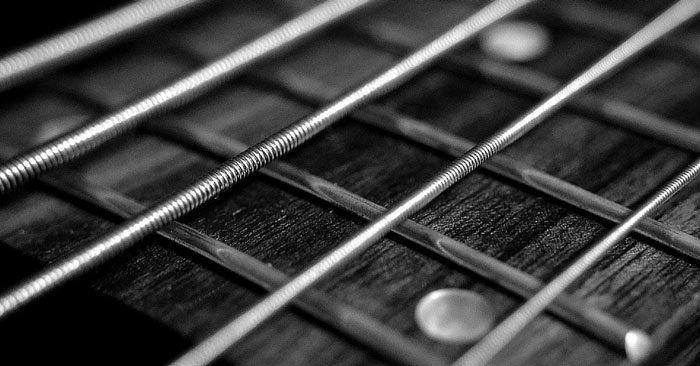Have you ever experienced playing the guitar in front of a live audience just to find out that your guitar is out of tune a few songs after?
I bet you managed to play a couple of songs, and your guitar worked just fine.
But when it was time to play a song that requires you to use a capo, your guitar is suddenly out of tune.
Every time you clip on your capo, the tuning changes.
And you have no choice but to, no matter how embarrassing it is, adjust the tuning in the middle of the song.
You tried changing the whole set of strings, a different brand at a time to no avail.
My friend, I have learned that no matter how expensive the strings are or how frequently you change it, it will all boil down to faulty guitar intonation.
Maybe you have already asked someone how to intonate a guitar but never really had a good understanding of it.
Or maybe you have a good idea about it, but you have not yet tried to do it on your own yet.
A Sneak Peek On Guitar Intonation
I know these unfamiliar terms may sound intimidating especially for those who have just begun their journey as a guitar player, but if you want to know how to intonate a guitar, you have come to the right place.
For starters, guitar intonation is the precise tuning of notes in each string in each fret.
This means that every note on every fret should have a green reading on the digital chromatic tuner.
Intonating your guitar does not mean you have to check the tuning for each and every fret.
You will only need to make sure that the 12th fret has a reading of one octave higher than the open string.
Why You Might Be Out Of Tune?
Here are some of the main reasons why you are out of tune:
String Action
This is defined as the height of elevation of the strings parallel to the fretboard.
The closer the strings are to the fretboard, the lower the action is.
The further away it is from the fretboard, the higher the action is.
When you press on the 12th fret, and you hear a buzzing sound, it means the string action is too low and needs to be adjusted.
The recommended string action is the lowest possible distance from the fretboard before it produces a buzz.
High string action is not recommended because the distance between the string and the fretboard adds up to the total length of the strings, which is another factor you should carefully manipulate.
String Length
The whole length of the string from the saddle to the nut is called the scale length.
If your 12th fret reads sharper than the equivalent of the open string tuning, the string needs to be elongated and vice versa.
To simplify it, if your strings are flat, you adjust towards the fretboard.
If your strings are sharp, adjust the length away from the fret board.

Before You Proceed To The Tutorial
Before we start, it is important that you familiarize yourself with these guitar parts.
When I began playing guitar, I never bothered about it at all until the need arose.
- Bridge - This is where the strings rest and where the saddle can usually be found.
This is also the part of the guitar where you can find the screws for adjustment. - Nut - this is the other end of the guitar where the strings rest.
These may be made of high-quality tension resistant plastic or ivory.
This, too, can be adjusted to lower the string action.
What Tools Do I Need For Intonating My Guitar?
- Digital Chromatic tuner
- Flat-blade screwdriver or Allen wrench
- Action gauge or a ruler with fractional markings
- Guitar Pick
Before anything else, make the adjustments on your usual playing position.
The default pressure your body, your hands, and gravitational pull slightly alters the architecture of the guitar and adds up to the equation.
Ready? 1-2-3, go!
1. Adjust String Action
Determine whether you want to play with low or high string height.
After making a decision, adjust the string action using your Allen wrench or flat-head screwdriver.
It is generally recommended to set up the action to the point just before the buzz.
Use your action gauge or a ruler to determine the right string height for you.
Pro-tip: If you still can’t find the lowest setting you want, try filing the nut using a round bastard file.
Use an appropriate gauge of file and gently file the crease where the strings rest.
Reinstall the strings and check if it matches your preference.
Please do this carefully as this process cannot be reversed.

2. Tune Your Guitar
Using your chromatic tuner, tune your guitar as close as you can get to the standard tuning (EADGBe).
I recommend using a guitar pick for more precision since the tip of the fingers are soft and the pressure exerted is quite difficult to control.
3. Check For Intonation
After tuning your guitar, press on the 12th fret of each string and check if the reading is an exact octave of the open string.
If the reading is flat, adjust the length of the string and make it shorter.
Bring the saddle towards the direction of the headstock.
If your reading is sharp, elongate the strings by adjusting it away from the bridge.
4. Verify
Tune and retune as necessary as the open string tuning also adjusts the length of the strings are modified.
5. Repeat
Repeat until you have intonated all your strings and you are satisfied.
Conclusion
I hope that you have learned a lot from this page.
Playing out of tune, especially with a live audience, is quite embarrassing, but it can be avoided.
I hope that after adjusting the intonation of your guitar, you will never be out of tune again!
So, how did you find the tutorial?
Tell me what you think by leaving a comment below and feel free to share this page with your friends.
Related post
